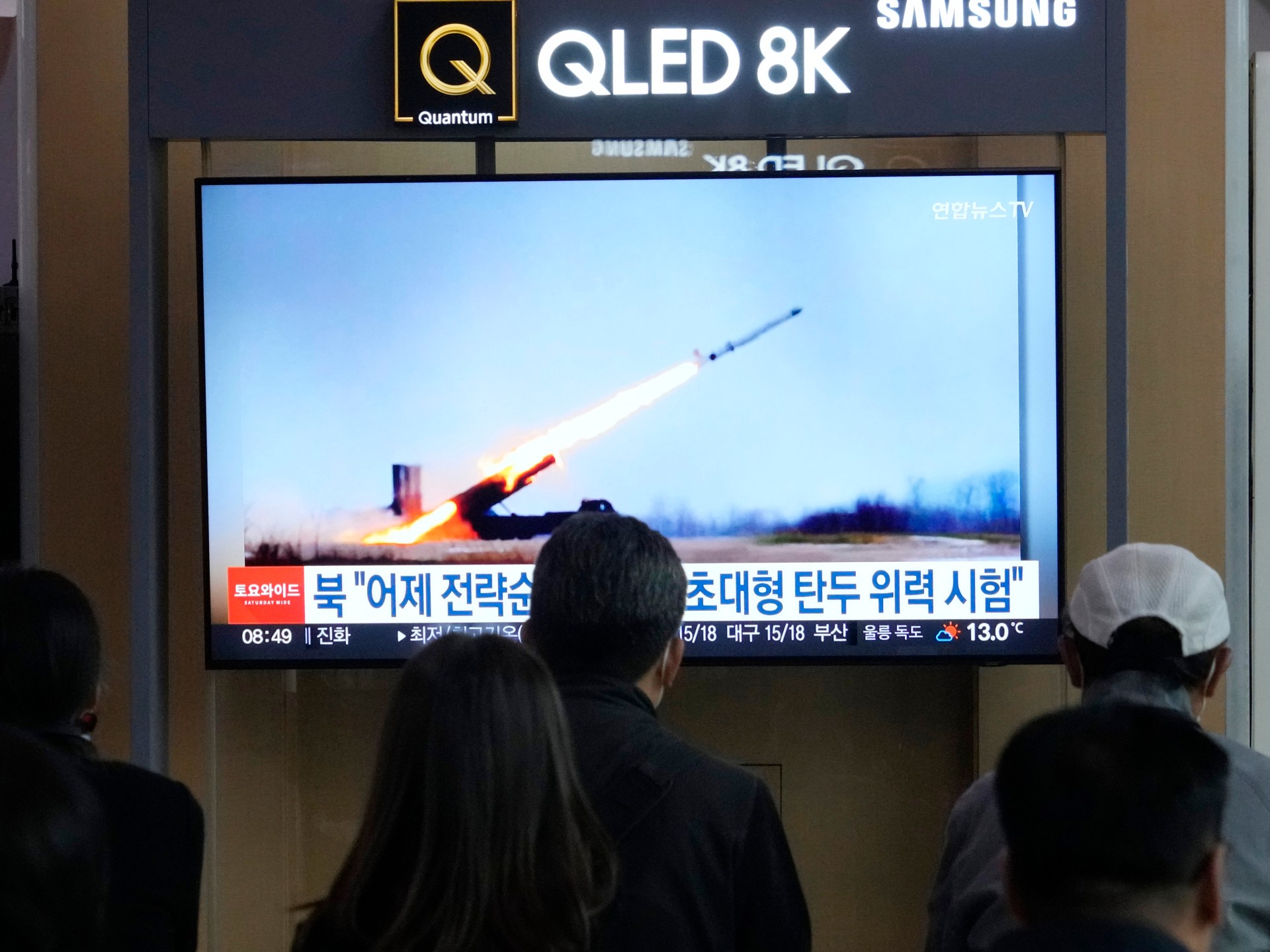Media
4 ways to respond to vaccine skeptics on social media – The Next Web
For most of the 20th century, more than 60,000 people died in the US from polio, diphtheria, and small pox each year. In 2016, the American death toll from these diseases was zero. Around the globe, two to three million deaths from these diseases and others, including measles, rubella, and tetanus, are prevented each year.
These remarkable statistics are a triumph of medicine and the single most effective public health measure in history: global vaccination programs.
COVID-19, after the most rapid and sustained vaccine development program in history, now looks set to be joining this list of fatal diseases that can be easily prevented with a jab or two. The disease that has killed an estimated 1.3 million people (and rising), may have had its day. Sadly, there’s a lot of misinformation surrounding vaccinations, threatening the success of inoculation programmes.
So what can you do to protect yourself against misinformation and challenge it in conversation with others?
1. Understand who you are talking to
Let’s not forget that the majority of people are happy to receive a COVID-19 vaccine (64%, according to a recent study). Only a small minority (9%) have no intention of getting vaccinated. If you enter into a debate about vaccination it may well be with someone who falls into this latter group. You are very unlikely to change the minds of these vaccine refusers, so the main audience for your arguments is actually the rest of any onlooking group – and particularly the 27% who are hesitant about vaccination.
[Read: ]
The point of your discussion is to empower the members of the audience with knowledge and arguments. To do so, it’s important to find common ground and “bond” with whoever you are talking to, rather than just lecturing them.
2. Inoculate against misinformation
There are numerous examples of misinformation “sticking” in our individual and social memories, despite repeated attempts to dislodge it – such as the false “fact” that humans have just five senses. Rather than fighting false facts, the better option is to enable people to spot misinformation before it percolates through society and becomes “endemic” as accepted truth.
The Debunking Handbook 2020 advocates triggering a mental “immune response” to fake news. To do so we need pre-emptive exposure to weakened versions of the manipulative strategies used by peddlers of false facts. In so doing we can inoculate against, or “prebunk,” the misinformation.
For example, once you realize that some social media users, publications and other bodies can have hidden agendas and may therefore misrepresent studies and cherry-pick information, you are better placed to assess the facts for yourself. Indeed, the tobacco and oil industries rolled out “fake experts” to create doubt that smoking causes cancers and CO₂ emissions affect our climate, respectively.
In my opinion, the excellent BBC Radio 4 program “More or Less” is a particularly good mental vaccine against misinformation.
3. Debunk efficiently
In the midst of a debate it is probably too late to deploy any prebunking tactics. But be careful about launching into a myth-busting monologue. Simply repeating untruths risks making them stick in our memories, so instead focus your talking points on the positive outcomes of vaccinations (like the facts at the top of this article). Don’t be the first person to mention the myth.

But if in the course of the conversation some misinformation does get a mention you will need to call it out. Let’s imagine you are in the midst of a debate about COVID-19 and someone makes the claim that the 5G network is the real cause of the disease. The key to getting this debunking right is limiting how often the lie gets a mention and making the truth more sticky than the myth. Here’s how to go about it.
a) Start by stating the truth in a clear, concise way. Don’t launch into a long explanation, instead imagine you are writing a headline.
COVID-19 is spread in droplets generated when people exhale, particularly when they cough, sneeze, or shout.
b) Point out the misinformation, and be clear that it is a myth.
The mobile network is basically a series of radio transmitters, and viruses can’t travel by radio waves.
c) Explain why the myth is wrong. You might point out some science that refutes the myth, and call out the flaws in the argument.
Besides, the COVID-19 virus has spread throughout countries, like Iran for example, that have no 5G network.
d) Restate the facts.
4. Think beyond facts
That said, facts alone will only go so far. The words we use are also important, they conjure up imagery that affect our response to the information we are being presented with. Consider “herds” and “communities”. Which of these would you like to be part of? Most people would say “communities.” So if you’re encouraging someone to get vaccinated, you may want to talk about their contribution to community immunity, rather than herd immunity.
Another important technique is storytelling, which can be much more effective than facts. Stories link cause and effect, making the conclusions that you want to present seem almost inevitable. For example, you may want to tell anti-vaxxers about a relative whose life was saved by a vaccine at a time when it wasn’t available to everyone.
Or you may, like the UK’s deputy chief medical officer, Jonathan Van Tam, want to stress that you have encouraged your own mother to take the vaccine, rather than just saying the elderly should take it.![]()
![]()
This article is republished from The Conversation by Mark Lorch, Professor of Science Communication and Chemistry, University of Hull under a Creative Commons license. Read the original article.
Read next:
If you want to learn a new tech skill, these training bundles can help. And it’s all under $21
Media
Social Media Tips for Event Profs – BizBash


Social media changes rapidly—and what worked last year might not work in 2024. (Just look at X’s, or Twitter’s, dramatic revenue loss after many major platforms have stopped posting or advertising on the platform.) So what does work on social media right now, particularly for event professionals?
“We don’t just want our audience to understand what we do—we want them to know who we are,” says Zoe Haynes, the sales and marketing coordinator for PlatinumXP who oversees the event planning agency’s digital marketing. “Social media has evolved into a space for cultivating relationships and building trust. We utilize various platforms to tell stories—the story of an event transformation, behind the scenes with our production crew, or maybe even some fun office shenanigans with our CEO.”
Haynes’ focus on maintaining a consistent, authentic brand presence was a common theme among event professionals we spoke to about how they’re using social media right now. It’s all about “fostering an ongoing connection with our followers,” agrees Elias Contessotto, social media manager for event production company 15|40.
But remember: Not every platform is created equal. Contessotto stresses the importance of tailoring your approach with each platform—but also not being afraid to experiment a bit to ensure you’re staying ahead of trends and maximizing audience engagement. “By creatively testing new tactics, we gauge audience response and efficacy, gradually integrating successful approaches into our channels,” he explains. “This iterative process empowers us to refine our content strategy continuously, adapting to evolving trends and audience preferences.”
In short, “It’s all about meeting your audience where they’re at,” says Taylor Elliot, vice president of marketing and brand strategy for Shepard Exposition Services. “Social media is such a great tool to amplify your brand voice. I always say as marketers we need to create a system that works for our brand even when we are sleeping, and social media is one of the tools to help achieve this.”
LINKEDIN & INSTAGRAM
From our conversations, LinkedIn and Instagram quickly emerged as the two top platforms in the event industry. “Instagram is our go-to for showcasing stunning event photos—however, LinkedIn holds equal if not greater importance in our strategy,” explains Haynes. “While Instagram captures attention with its visual allure, LinkedIn allows us to dive deeper into industry conversations and build relationships with our peers.”
Contessotto likes to target a B2B audience with 15|40’s LinkedIn presence, posting content that focuses on industry insights, professional networking, and collaborations with studios. “We often share static posts similar to those on Instagram, tagging relevant studios to expand our reach,” he says, noting that LinkedIn posts are often reshared by team leaders and executives. “LinkedIn [also] serves as a prime platform for spotlighting press coverage, award nominations, and industry highlights.”
On Instagram, meanwhile, Contessotto expands 15|40’s content to cater to both B2B and B2C audiences. “We share visually engaging posts that highlight our expertise, industry leadership, and collaborations, appealing to a wider range of followers,” he says. “Instagram will have ‘POV’ content, which is much more personal and requires less high-quality tools to tell our story. I came to 15|40 from an influencer background, and from experience, I notice that more amateur content does better on that platform, like using an iPhone for reels rather than a DSLR camera.”
Heather Rouffe, director of sales at Atlas Event Rental, also appreciates the more personal touch that can come with Instagram. “Through that platform, we strive to educate the industry, create brand awareness, and most importantly to us, show the personal side to our company, brand, and rentals,” she explains. “With so much of the human side of things lost in a digital age, being personable and showing the people behind the brand is very important to us. We find the clients really appreciate the behind-the-scenes content and becoming familiar with the Atlas crew.”
On the flip side, though, that doesn’t mean LinkedIn can’t get a little personal. Al Mercuro, senior account director at trade show display company Genesis Exhibits, prioritizes LinkedIn due to the connections he’s been able to make with marketing directors and event directors at companies he’d like to do business with.
“I try to not promote my company as much as my brand by sharing information that will help them in their jobs—I find I get many referrals this way,” Mercuro notes. “I believe it is also a living resume; before I meet with someone, they will often check out my LinkedIn page to learn more about me. The more you can build up your profile and the number of connections you have adds to your value and makes it attractive to have them want to work with you.”
Jonathan Kazarian, the founder and CEO of Accelevents, also uses LinkedIn to build up his personal thought leadership—and therefore, build awareness of his event management software company. “Ninety-nine percent of what I share on LinkedIn is professional,” he says. “I’ll share something about my personal life to build connection, but that’s not my focus with LinkedIn.”
FACEBOOK, TWITTER (X), TIKTOK, & MORE
In a sign of changing times, most of the event professionals we spoke with are not investing much in Facebook or Twitter (now known as X)—though many are still updating them.
“We push out all of our Instagram content to our Facebook, to ensure our followers and intended audiences on both platforms are receiving similar content,” says Contessotto. “We also maintain our Twitter, or X, channel to share some of our event photos, as well as retweet content that clients we work with post that are captured at our events.”
Mercuro finds that Facebook is still an effective way to reach older generations—but for younger generations, he’s found some success marketing events on TikTok. “I am a board member of a nonprofit concert venue, and we needed to attract a younger audience,” he remembers. “I suggested we work with a local university and their marketing classes to take on a project like our organization to give them real-life experience. They chose to use TikTok to reach the younger demographics in our area, and it has been extremely successful.”
Contessotto agrees that TikTok is naturally very Gen Z-oriented, so content should be tailored accordingly. “We’ve noticed that we typically receive high engagement when our content is celebrity-focused,” he says. “Our team is constantly working to balance out our TikTok pages to include viral content, as well as videos that highlight our diverse portfolio of work to attract the right kind of audience.”
Haynes says she’s still exploring TikTok’s potential for Platinum XP. “I’ve noticed its popularity as a discovery platform,” she says. “It’s a great tool for driving awareness, but we should also consider whether our target audience is active on TikTok.” One tool that Haynes does invest time in? Pinterest. “It’s a powerful tool for SEO purposes. Its visual nature allows us to drive awareness to our website through captivating photos. By sparking curiosity, we encourage users to click through and explore further.”
Media
North Korea conducts test on new ‘super-large warhead’: State media – Al Jazeera English


Pyongyang says new warhead designed for cruise missiles, adding that a new anti-aircraft rocket was also tested.
North Korea has conducted a test on a “super-large warhead” designed for a strategic cruise missile, state media reports, adding that it also launched a new type of anti-aircraft missile.
“The DPRK Missile Administration has conducted a power test of a super-large warhead designed for ‘Hwasal-1 Ra-3’ strategic cruise missile”, KCNA news agency reported on Saturday, referring to North Korea by an abbreviation for its official name – Democratic People’s Republic of Korea.
North Korea also carried out a test launch on Friday afternoon of a “Pyoljji-1-2”, which state media said was a “new-type anti-aircraft missile”.
KCNA added that “a certain goal was attained” through the test without providing further details.
The weapons tests were part of the “regular activities of the administration and its affiliated defence science institutes”, KCNA reported, referencing the operation of “new-type weapon systems”.
The tests “had nothing to do with the surrounding situation”, KCNA added, but did not give any further information.
In early April, North Korea said it had tested a new medium-to-long-range solid-fuel hypersonic missile, with state media sharing a video of it being launched as leader Kim Jong Un looked on.
Cruise missiles are among a growing collection of North Korean weapons designed to overwhelm regional missile defences. They supplement the North’s vast arsenal of ballistic missiles, including intercontinental variants, which are said to be aimed at the continental United States.
Analysts say anti-aircraft missile technology is an area where North Korea could benefit from its deepening military cooperation with Russia, as the two countries align in the face of their separate, intensifying confrontations with the US.
The US and South Korea have accused the North of providing artillery shells and other equipment to Russia to help extend its warfighting ability in Ukraine.
Since its second nuclear test in 2009, Pyongyang has been under heavy international sanctions, but the development of its nuclear and weapons programmes has continued unabated.
Media
Lawmakers pan Ben Gvir for ‘unforgivable’ tweet on alleged Israeli strike on Iran – The Times of Israel


Italian FM says Israel gave US ‘last minute’ warning about drone attack on Iran
CAPRI, Italy (AP) — The United States told the Group of Seven foreign ministers that it received “last minute” information from Israel about a drone action in Iran early this morning, Italy’s foreign minister says.
Italian Foreign Minister Antonio Tajani, who chaired the meeting of ministers of industrialized countries, says the United States provided the information at session this morning that was changed at the last minute to address the suspected attack.
Tajani says the US informed the G7 ministers that it had been “informed at the last minute” by Israel about the drones. “But there was no sharing of the attack by the US. It was a mere information.”
Early Friday, Iran fired air defenses at a major air base and a nuclear site near the central city of Isfahan after spotting drones, part of an apparent Israeli attack in retaliation for Tehran’s unprecedented drone-and-missile assault on the country last weekend.
In a communique following the three-day meeting, the ministers urged the parties “to prevent further escalation.”
-
Media19 hours ago
DJT Stock Rises. Trump Media CEO Alleges Potential Market Manipulation. – Barron's
-
Media21 hours ago
Trump Media alerts Nasdaq to potential market manipulation from 'naked' short selling of DJT stock – CNBC
-
Investment19 hours ago
Private equity gears up for potential National Football League investments – Financial Times
-
Real eState11 hours ago
Botched home sale costs Winnipeg man his right to sell real estate in Manitoba – CBC.ca
-
News17 hours ago
Canada Child Benefit payment on Friday | CTV News – CTV News Toronto
-



 Sports24 hours ago
Sports24 hours ago2024 Stanley Cup Playoffs 1st-round schedule – NHL.com
-
Business19 hours ago
Gas prices see 'largest single-day jump since early 2022': En-Pro International – Yahoo Canada Finance
-
Art23 hours ago
Enter the uncanny valley: New exhibition mixes AI and art photography – Euronews





